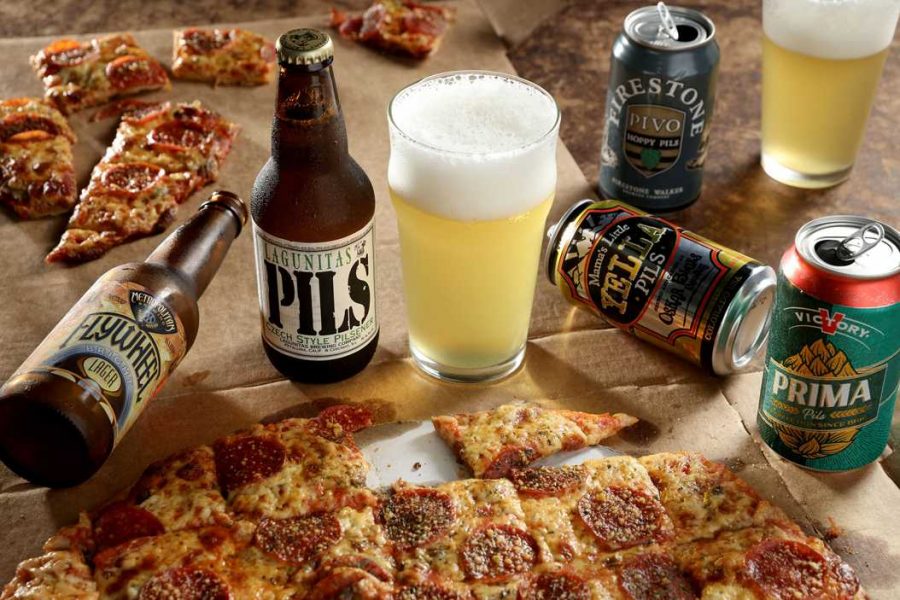Beer pong, flip cup, shotgunning, house parties and bar crawls — all staples of college culture.
When I first started college, I thought these were only movie tropes meant to perpetuate the theatrical idea of college as four years of non-stop partying. But then I actually got here and walked through the beer-can littered streets of South Oakland, watching students falling over themselves coming home from parties. I realized those film representations aren’t that outlandish.
Instead of universities being heralded as places for intellectual gymnastics, pioneering research and preparing students for successful careers as I had imagined, they’re more synonymous with casual drinking, partying and drug use.
According to the Addiction Center, college students are twice as likely to abuse drugs and alcohol than their non-collegiate peers. The stressful nature of classes, jobs and student debt makes for a great excuse to turn to an abundance of easily available drugs and alcohol as a way to relax, let loose and have fun when classes let up.
Binge drinking is one of the most integral and pervasive parts of college life, impossible to completely avoid.
And it’s also a major public health problem.
The exact definition of binge drinking varies from source to source. The Substance Abuse and Mental Health Services Administration defines it as drinking 5 or more alcoholic drinks on the same occasion. The National Institute on Alcohol Abuse and Alcoholism uses blood alcohol content to make the determination, saying any pattern of drinking that raises the BAC to 0.08 falls within the category.
Put more simply, binge drinking can be understood as the trend of drinking a lot of alcohol over a short period of time with the intention of getting intoxicated — i.e. getting “super wasted.” Basically your regular Friday night, right?
When you consider your last few nights out, it probably doesn’t seem that ridiculous or unreasonable to drink this much — or even to do it multiple times a week or month. Neil Capretto, the medical director of Gateway Rehab, sees the effects of over-drinking regularly.
“Generally, underage and college-aged students tend to drink differently from [adults over 30]. It’s more likely when students drink, they drink for the purpose of getting intoxicated,” Capretto said. “Their goal isn’t just to have one — it’s usually to have several.”
Maybe this Homecoming, you’re considering pushing your alcohol intake a little further. I would sincerely urge you not to.
Drinking like this can have severe negative effects on academics, social life and mental and physical health.
One in four students reported academic troubles as a result of drinking. A 2015 study by the National Institute on Alcohol Abuse and Alcoholism found that college students who consumed alcohol at least three times per week were six times more likely to perform poorly on exams and projects and five times more likely to miss class.
I’m not knocking drinking as a fun thing to do or a way to unwind at the end of the day. But if it starts to hinder your academics, then it’s just paradoxical — not to mention a huge waste of money.
“Recognize that you’re going to college because you obviously care about your future, but one night of drinking a little more than you plan could really change your future,” Capretto said.
More than 1,825 college students are killed in alcohol-related incidents each year, and more than 600,000 are injured, according to a 2009 study from the Journal of Studies on Alcohol and Drugs.
These numbers aren’t faceless statistics or things that only happen at other schools. We see incidents like these on our campus, too. A 22-year-old Pitt student was charged last month for driving under the influence and causing personal injury after he crashed into another car and the side of the bookstore. He minorly injured three people after driving the wrong way in the bus lane along Fifth Avenue. The situation could have been much worse.
Capretto also warned about the dangers of mixing drugs, particularly alcohol and marijuana.
“In this case, one and one isn’t two. One and one is five,” Capretto said. “If your blood alcohol is .04, which is relatively low, and you take a couple of hits of marijuana, you become impaired as if you were at a BAC of .09. There’s an additive effect when you mix the two. A lot of people aren’t aware of that.”
Statistics may seem like just numbers, easily forgotten about once the sun goes down, but let us recall real life examples of stupid — and potentially life-threatening — mistakes people have made after drinking on our campus so far this year.
The culture of drinking that permeates college life is one that often equates drinking with school spirit, where activities, such as orientation week, football games and homecoming weekends, serve as a disguise for students to “turn up” in the name of hailing to Pitt.
It also serves as an excuse to do things that would otherwise be embarrassing or rude without having to be held responsible for it.
Heading to Hems on a Thursday night or splitting a case of beer with a buddy may seem like one of the easiest things to do right now, and it might seem like it’s all in good fun, but pushing it can have serious consequences you’re not going to want to face in the future.
“Although alcohol is very socially accepted and ingrained in our culture and it’s legal, it is easy to forget that it is just the liquid version of a mind-altering drug,” Capretto said.
Amber primarily writes about gender and politics for The Pitt News.
Write to her at [email protected].


